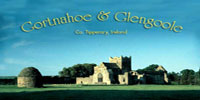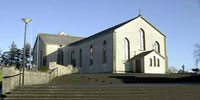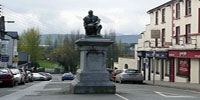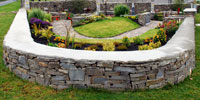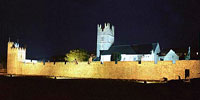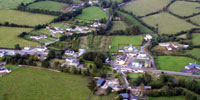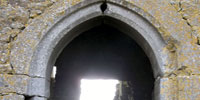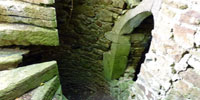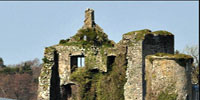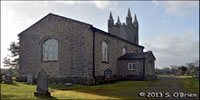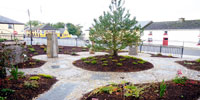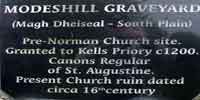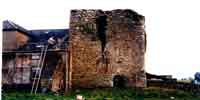Places
Derryvella Lake (Loch Dhoire Mheile)Ecological Loop Walk
DERRYVELLA LAKE/LOCH DHOIRE MHEILLE
This amenity area has been developed by Slieveardagh Rural Development in cooperation with Bord na Móna.
The peat bogs around here formed part of the Littleton Works, operated by Bord na Móna, the national peat development agency founded in 1946. The briquette factory, visible 1.5km to the southwest, opened in 1982 and closed in 2019; it is now a plastics recycling plant. The decline of peat extraction has allowed the transformation of this part of the peatlands into an area for amenity and nature conservation. An artificial lake for angling was created in 1999. Two fishing huts were erected in 2007 to facilitate anglers, and wheelchair-accessible fishing bays were also installed, along with picnic tables and the car park.
Derryvella derives from Irish Doire Mheille, meaning the ‘oak grove of Meille’, Meille being the mother of Tighearnach, the saint associated with the ancient monastic site nearby. The bogs around Derryvella and Littleton are noted for having the remains of ancient timber trackways that once connected areas of higher, dry land (‘islands’); over time bog growth overwhelmed the trackways.
The natural beauty of the place is evident to all, with the lake’s naturalized shoreline having a magical view of the Slieveardagh Hills. There are two walks, one allowing visitors to enjoy the lake and the other, longer Loop Walk incorporating parts of the former peat workings.
Peat is essentially the compacted remains of dead vegetation. Bogs in the lowlands of Ireland started by gradually infilling low-lying areas or lakes and continuing to expand to form a low dome shape, hence ‘raised bog’. Turf is the name given to peat that is harvested for fuel, usually as small blocks or sods, and this continues on a small scale. Bord na Móna ‘briquettes’ were produced by moulding and compacting “milled” peat harvested from the surface of the peat fields.
Flora includes bog cotton, orchids, furze and a variety of grasses and other plants. The sparse vegetation supports a few alder saplings, but also allows wild flowers to grow, attracting a fine range of butterflies, including the Common Blue, Narrow-bordered Hawkmoth, Painted Lady, Orange-Tip, Small Heath, Speckled Wood and the rare Marsh Fritillary; there are also Emperor and Brown Hawker dragonflies. Fauna includes the Green Tiger Beetle, hare and fox. Birdlife includes the Lapwing, Buzzard, Common Linnet, Coot, Cuckoo, Curlew, Reed Bunting, Stonechat, Willow Warbler, and possibly the Corncrake; on the lake are ducks, mallards, water hens and swans.
The adjacent village of Glengoole (Gleann an Ghuail = valley of coal), officially New Birmingham, was established by a local landowner, Vere Hunt, to take advantage of the presence of coal. His vision of a major industrial centre never emerged, as an essential spur railway line was not sanctioned. There was coalmining in the Slieveardagh Hills as far back as the year 1400. Later workings operated from the 1830s to the 1880s and fine tall chimneys and engine houses recall this era. More recent workings, from 1941 to 1984, have left fewer traces, but its social history is well remembered.
For more information on the area: http://glengoole.net/pages/history.html

